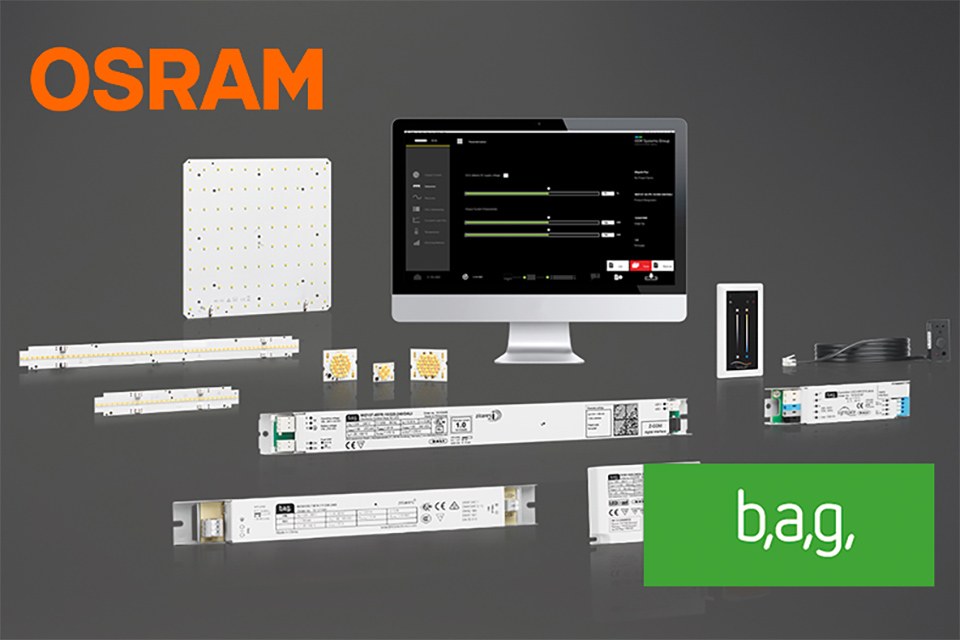BAG Electronics Becomes a Part of Osram - A Focus on LED Products and Human Centric Lighting
BAG electronics, specialising in electronic control gear, LED modules and software for innovative lighting solutions, is leaving the Trilux Group to become a part of the Digital Systems (DS) business unit of Osram. The sale is subject to approval by the relevant competition authorities.
Confidentiality has been agreed upon regarding financial details of the transaction. BAG achieved turnover of approximately 50 million euros in 2017. One element of the contract is a 5-year strategic supply agreement with a fixed minimum turnover volume: Osram will supply Trilux with components for use in its luminaires.
The established and highly respected BAG brand will continue to maintain and expand its profile as an electronics specialist in the future, and company headquarters will remain at Arnsberg in the Sauerland (North Rhine-Westphalia) region of Germany. A total of 380 BAG employees will be transferred to Osram with the sale: around 40 in Germany as well as 340 at the Philippines production location. The previous BAG location in India and the weather-proof luminaire specialist Zalux are not a part of the sale and will remain in the Trilux Group.
BAG has positioned itself in recent years in a pioneering way and with success in the lighting electronics market by focusing on intelligent LED lighting systems, innovative controls for Human Centric Lighting (HCL) and customer-specific solutions. This path of concentration and specialisation will also continue in the future, explained Dirk Politowski, CEO of BAG electronics GmbH: “As a flexible team we are proud to be a part of the Osram Group and we wish to continue optimising our range of products and services for the luminaire industry.” Politowski also stated that for BAG customers from the world of lighting this heralds diverse advantages: “The benefits for BAG customers also include the possibility of being supplied directly from European production locations in the future as well as advantages from the use of existing patent agreements.”

